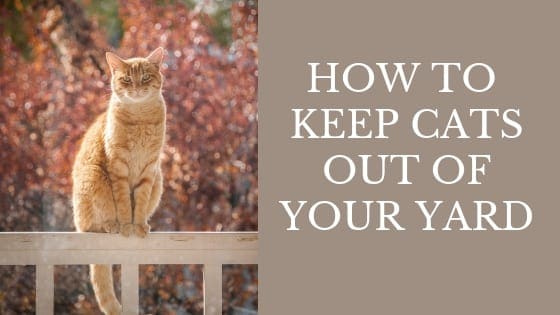
The appearance of an unfamiliar outdoor cat in your yard can create problems in your existing feline family. If your cat is allowed outdoors, the appearance of an unwanted feline stranger can result in fighting. Not only is this extremely stressful to both cats but there’s a strong probability that one or both will get injured.
Dangerous Interactions
Abscesses commonly result from cat bites because bacteria can get trapped in the tissues after the wound has sealed over on the skin’s surface. Abscesses are extremely painful for the cat and veterinary care is required. Often, a surgical drain must be inserted to allow the abscess to heal from the inside out. Not a pleasant experience for any cat to have to endure. There are also other injuries that commonly occur during a cat fight and you certainly don’t want any cat, whether he’s yours or not, suffering in any way.
Free-roaming cats may not be vaccinated and disease transmission becomes a risk should there be an interaction with your own cat.
If another cat (or any animal) comes into your yard and frightens your outdoor cat, he can end up getting chased out of the area and that can put him at risk for getting hit by a vehicle during the chase. It also increases the chances that he may end up lost.
Spray Wars and Other Chain Reactions
Whether your cat is an indoor or outdoor kitty, the appearance of an unfamiliar cat outside can spark spraying behavior. With indoor cats, a common spray target is either at the window where the outdoor cat was seen or on the wall opposite the window.
In multipet homes, redirected aggression is a potential risk if an indoor cat spots an unfamiliar cat in the yard. Since he can’t gain access to the outdoor intruder, he lashes out at the nearest feline, canine or even human family member. Redirected aggression can be minor or it can set companion pets up for a long-standing feud if not immediately and appropriately handled with behavior work.
When a fearful or timid cat sees an unfamiliar cat outdoors it can cause him to hide more and feel as if his home is no longer a safe place. Just because YOU know the outdoor cat can’t get inside doesn’t mean your cat understands that.
Talking With Your Neighbor
If you know who owns the cat you can attempt to talk to the neighbor but that’s a very touchy situation. If there’s a chance you can tactfully talk to your neighbor about keeping their cat indoors, then go for it but keep in mind that people can get extremely defensive when confronted about a pet’s behavior.
Why is the Cat Attracted to Your Yard?
It will help if you know why a cat has started coming into your yard. If you have a bird feeder set up and it’s attracting the local feline population then the easiest solution is to stop feeding the birds or invest in a cat-proof fence to keep unwanted animals off your property. A search online will show you various types of fences and companies who manufacture them.
Sometimes an outdoor cat keeps coming into the yard because he sees your own cat. If your cat is allowed outdoors then the safest solution is to confine your cat to the indoors. If you provide environmental enrichment for your cat then he’ll get all the fun and stimulation that’s he’s used to, but in a much safer atmosphere.
Outdoor cats may see an indoor cat in the window and make return visits. If your female cat is unspayed, then that might be attracting any intact male cats in the area. Some outdoor cats also just come around because they’re curious about your cat or are attempting to claim a bigger territory for themselves.
Access to food can also attract cats into the yard. If you feed animals outdoors then that will most likely attract other cats to the area. Don’t grow catnip outdoors either because that sends out an open invitation to every feline in the neighborhood.
Keeping Cats out of Your Yard
The easiest way is to make your yard unattractive to them. One effective way to do that is through a motion-activated lawn sprinkler. When setting up a motion-activated water sprinkler, be careful that you don’t place it where people walk.
If the uninvited cat is coming into your yard to use your garden as a litter box, install some garden mesh just under the top layer of soil. This will make it difficult and uncomfortable for the cat to dig and scratch around. You can also place smooth stones in the garden to make it unappealing for the cat to dig.
Keep outdoor sandboxes totally covered when your children aren’t playing. These are very popular make-shift litter boxes for outdoor cats.
Because cats don’t tend to like the scent of citrus, some people place citrus peels along their garden but I don’t advise that because you’ll end up attracting other animals such as raccoons. You don’t want to trade one problem for another.
Attempting to Rescue or Trap the Cat
If you suspect that the cat is a stray and is totally safe to approach and handle, you can bring him to your veterinarian or local shelter to see if there’s a possibility that he has been microchipped. Many times, an indoor cat who escaped or got lost may look dirty if he has been out for a while. So it’s always a wise choice to check for a microchip.
If it isn’t safe to handle the cat, contact your local shelter or local feline rescue organization for advice. They can come and help rescue the cat with a humane trap or provide you with instructions on how to trap the cat on your own. Keep in mind that your safety is crucial and a terrified cat can cause VERY serious injury to you. Unless you’re skilled at humanely trapping a cat, let experts help you.
Need More Information?
For more information on cat behavior and training, refer to the best-selling books by Pam Johnson-Bennett. Pam’s books are available at bookstores and also online. We’ve included links to Amazon here on our website.
If you have a question about your cat’s behavior or health, contact your veterinarian. This article is not intended as a medical diagnosis nor is it a replacement for your cat’s regular veterinary care. This article is for general information purposes only.





